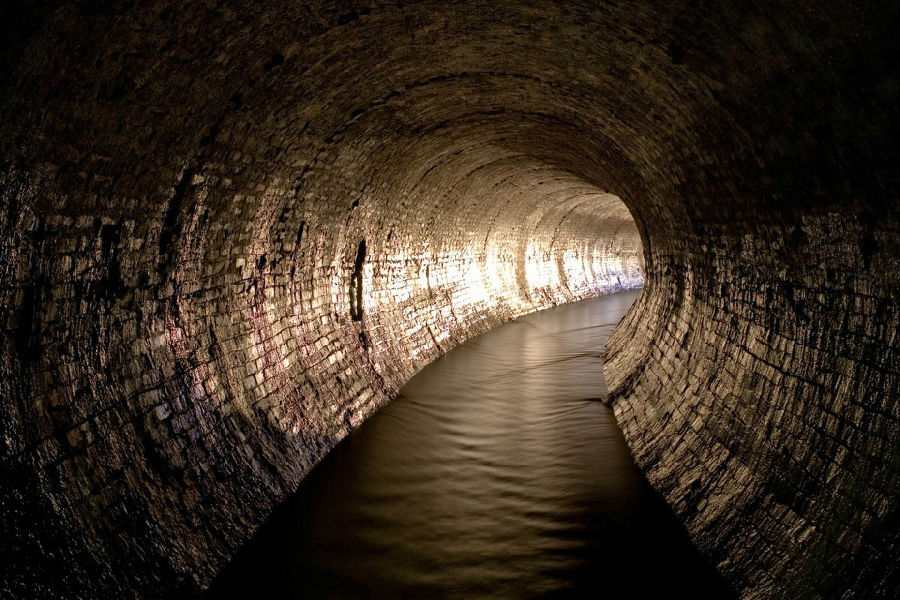Sewers are a marvel. They allow us to live close together without cities turning into smelly, disease-spreading swamps.
下水道堪稱(chēng)奇跡。因?yàn)樗藗冞^(guò)上親密的群居生活的同時(shí),不至于把城市搞得臭氣熏天、疾病泛濫。
In a sewer's anaerobic conditions, common sulfate compounds are reduced by bacteria to hydrogen sulfide — the source of that rotten egg smell. And hydrogen sulfide when exposed to air forms sulfuric acid. Which eats away at concrete. The result: crumbling sewers.
在下水道缺氧的情況下,細(xì)菌會(huì)將常見(jiàn)硫酸化合物分解,使其轉(zhuǎn)化為硫化氫——這便是臭雞蛋氣味的來(lái)源。當(dāng)硫化氫暴露在空氣中時(shí),會(huì)形成硫酸,硫酸有侵蝕混泥土的作用,使得下水道破碎不堪。
The response has been to try to remove sulfide from sewage water. But researchers in Australia asked a different question: where does the original sulfate come from?
一直以來(lái),人們都在試圖將硫化物從污水中分離出來(lái)。然而,澳大利亞研究人員卻轉(zhuǎn)變了思路:這些硫化物來(lái)自哪里?

Turns out much of it is from drinking water treatment. Aluminum sulfate is added at most Australian drinking water plants tested to coagulate solids out of the dirty water. That process is the source of more than half the resulting sulfates in the sewage. Numbers are similar in the U.S.
調(diào)查結(jié)果顯示,大部分的硫化物都產(chǎn)生于飲用水的處理。在澳大利亞的飲用水工廠中的污水里加入硫酸鋁進(jìn)行檢測(cè),結(jié)果顯示絕大多數(shù)的飲用水工廠里的污水都出現(xiàn)了凝結(jié)顆粒。污水中大部分的硫化物均來(lái)自這一處理過(guò)程。美國(guó)也出現(xiàn)類(lèi)似的調(diào)查數(shù)據(jù)。
The scientists say that by switching to nonsulfate-based coagulants, governments worldwide could save a billion dollars a year in sewer repair costs. The research is in the journal Science.
科學(xué)家說(shuō),如果用不含硫酸鹽的凝結(jié)劑取代含硫酸鹽的凝結(jié)劑的話(huà),每年,世界各國(guó)政府便能在下水道的維修費(fèi)用中省下十億美元。該項(xiàng)研究在《科學(xué)》雜志中發(fā)表。
Today, drinking water is managed separately from sewage treatment. A related editorial calls for a holistic approach to water management that looks at the entire water cycle, and helps save sewers in the process.
如今,飲用水管理和污水處理是分開(kāi)進(jìn)行的。相關(guān)社論呼吁:需從水循環(huán)著手對(duì)水進(jìn)行全面管理,同時(shí)也要注意保護(hù)下水道。











